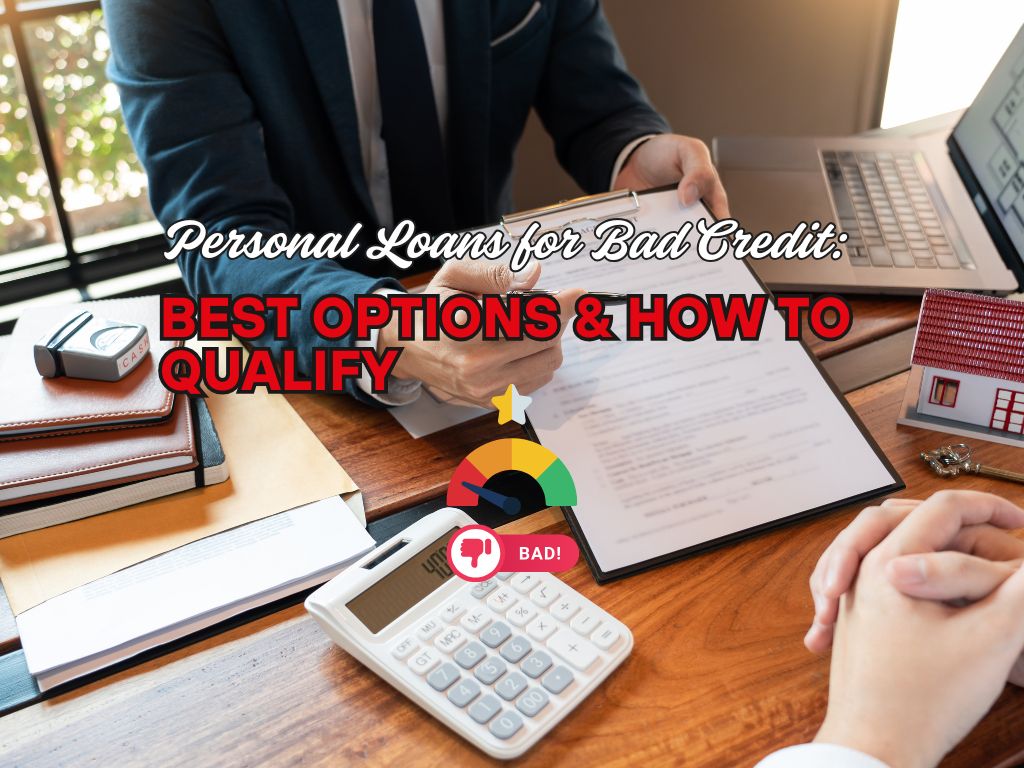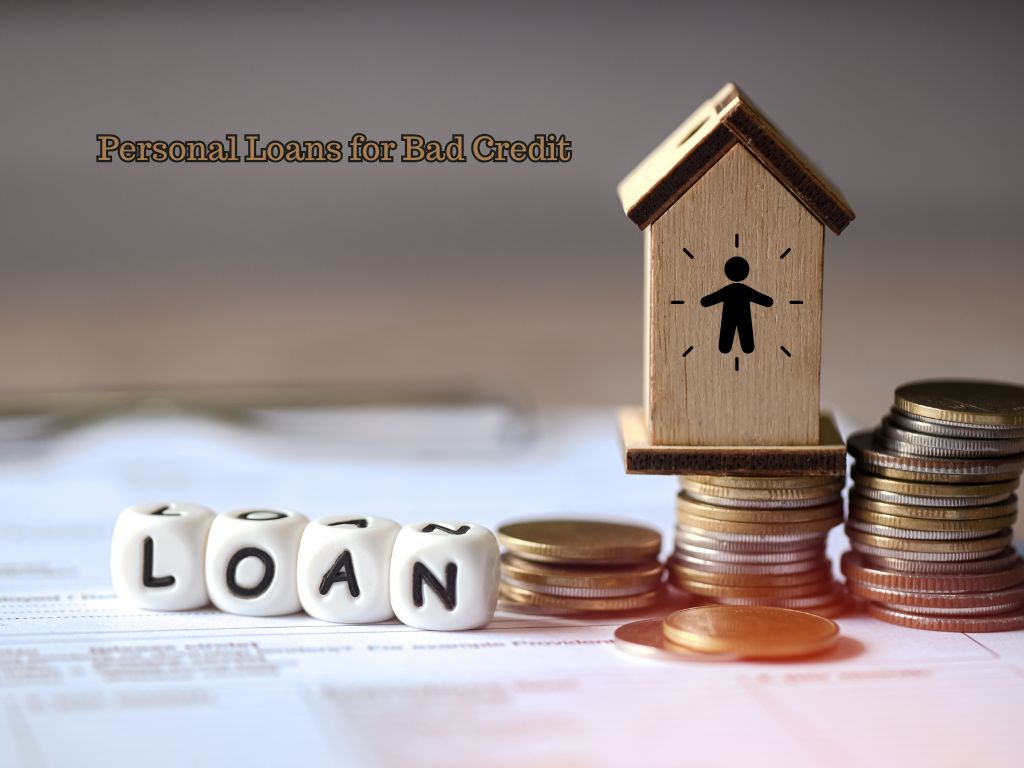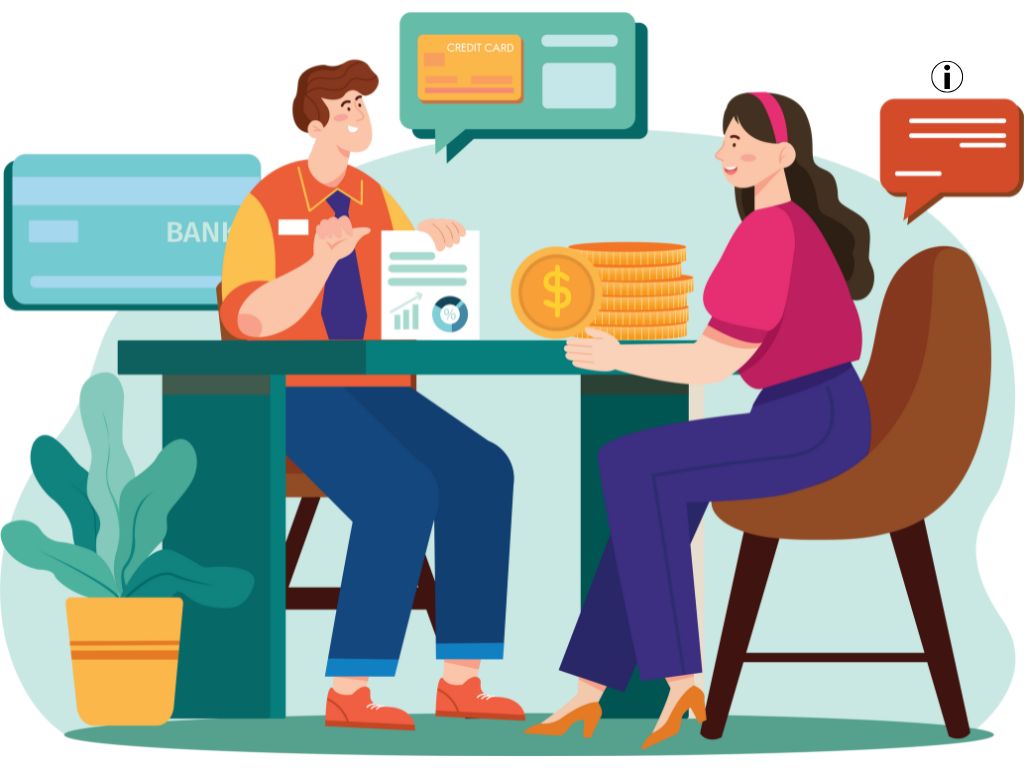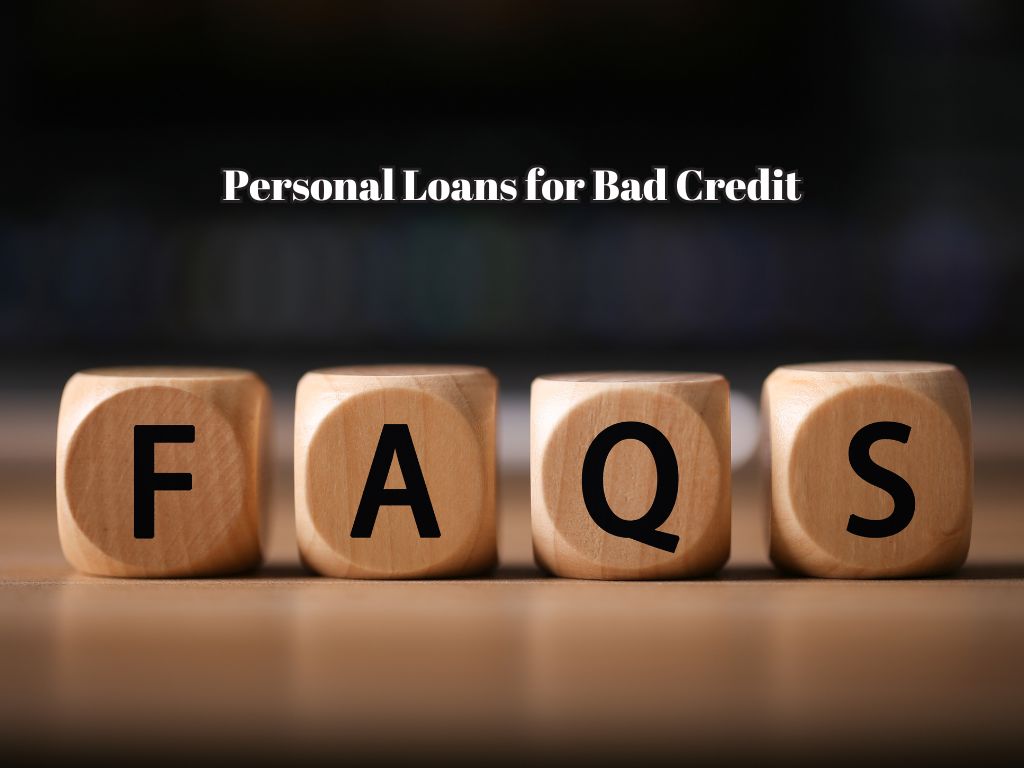Introduction
Finding a personal loan with bad credit can feel like an uphill battle. Many traditional lenders rely heavily on credit scores to determine eligibility, making it difficult for borrowers with low credit scores or past financial struggles to get approved. However, there are lenders that specialize in bad credit personal loans, offering financing options tailored to those with less-than-perfect credit.
These loans can be used for a variety of purposes, such as consolidating debt, covering emergency expenses, or making a major purchase. While interest rates may be higher than those for borrowers with excellent credit, the right lender can provide reasonable terms and manageable repayment options.
In this guide, we’ll explore how personal loans for bad credit work, what to look for in a lender, and strategies to improve your approval odds. Whether you’re seeking a loan to cover unexpected costs or to rebuild your credit, this guide will help you make an informed borrowing decision.

What Are Personal Loans for Bad Credit?
A personal loan for bad credit is a loan designed for borrowers with low credit scores or limited credit history. Unlike traditional personal loans that require a strong credit profile, these loans cater to individuals who may have past financial challenges, late payments, or high debt-to-income ratios.
Since lenders view bad credit borrowers as higher risk, these loans often come with higher interest rates, lower loan amounts, and stricter repayment terms. However, they can still be a valuable financial tool for those who need quick access to funds.
Types of Personal Loans for Bad Credit
- Secured Personal Loans – These require collateral, such as a car or savings account, which reduces the lender’s risk and may result in lower interest rates.
- Unsecured Personal Loans – These do not require collateral but typically come with higher interest rates and stricter eligibility requirements.
- Credit Union Loans – Many credit unions offer personal loans with more flexible approval criteria than traditional banks.
- Payday Alternative Loans (PALs) – Some federal credit unions provide PALs, which are small-dollar loans with regulated fees and lower interest rates than payday loans.
- Online Lenders – Many online financial institutions specialize in bad credit loans, offering quick approval processes and competitive rates.
Personal loans for bad credit can help borrowers cover emergency expenses, consolidate debt, or make essential purchases, but it’s crucial to compare lenders to find the best terms and avoid predatory lending practices.
How Do Personal Loans for Bad Credit Work?
Personal loans for bad credit function similarly to standard personal loans but with some key differences in eligibility, interest rates, and repayment terms. Here’s a breakdown of how they work:
1. Loan Application Process
- Borrowers apply online, through a credit union, or at a traditional bank.
- Lenders review credit history, income, employment status, and debt-to-income ratio.
- Prequalification may be available, allowing borrowers to see potential loan terms without affecting their credit score.
2. Loan Approval & Interest Rates
- Higher credit scores lead to better rates and loan terms.
- Those with bad credit will likely face higher interest rates (often between 15% and 36% APR).
- Some lenders may require collateral (for secured loans) or offer smaller loan amounts to mitigate risk.
3. Loan Disbursement & Repayment
- Approved loans are disbursed as a lump sum, typically within 1 to 7 business days.
- Borrowers repay the loan in fixed monthly installments, which include principal and interest.
- Loan terms typically range from 12 to 60 months, depending on the lender.
4. Credit Impact
- On-time payments help improve credit scores over time.
- Missed payments can lead to late fees, credit score damage, and possible collection efforts.
Understanding how these loans function can help borrowers make informed financial decisions and avoid predatory lenders that may charge excessive fees or hidden penalties.
How to Qualify for a Personal Loan with Bad Credit
Securing a personal loan with bad credit may seem challenging, but it’s possible with the right approach. Lenders consider multiple factors beyond just your credit score when deciding whether to approve your loan. Here’s how to improve your chances of qualifying:
1. Check Your Credit Score & Report
- Review your credit report for errors or inaccuracies that could lower your score.
- Dispute any incorrect information with the credit bureaus (Experian, Equifax, TransUnion).
- Knowing your credit score helps you find lenders that match your credit profile.
2. Compare Lenders & Loan Options
- Some lenders specialize in bad credit personal loans, offering more flexible requirements.
- Credit unions and online lenders often provide better loan terms than traditional banks.
- Use prequalification tools to check potential loan offers without impacting your credit score.
3. Consider a Co-Signer or Collateral
- A co-signer with good credit can help you secure better loan terms.
- A secured personal loan, backed by collateral (like a car or savings account), may offer lower interest rates.
4. Lower Your Debt-to-Income Ratio (DTI)
- Lenders check your DTI ratio to ensure you can handle additional debt.
- Paying down existing debts before applying can increase approval chances.
5. Show Proof of Income & Stability
- Lenders want to see steady income from employment, self-employment, or other sources.
- Providing pay stubs, tax returns, or bank statements can strengthen your application.
6. Avoid Multiple Loan Applications
- Applying to several lenders at once can trigger multiple hard inquiries, lowering your credit score.
- Instead, compare offers and apply strategically to lenders who are most likely to approve your application.
By taking these steps, borrowers with bad credit can increase their chances of approval and secure a personal loan with favorable terms.

Best Personal Loan Lenders for Bad Credit
Finding the right personal loan for bad credit requires comparing lenders based on interest rates, loan terms, fees, and eligibility criteria. Below are some of the best lenders that cater to borrowers with poor or fair credit.
1. Upgrade
- Loan Amounts: $1,000 – $50,000
- APR Range: 8.49% – 35.99%
- Minimum Credit Score: 560+
- Best For: Borrowers with bad credit looking for flexible repayment options.
2. LendingPoint
- Loan Amounts: $2,000 – $36,500
- APR Range: 7.99% – 35.99%
- Minimum Credit Score: 580+
- Best For: Fast approval and funding.
3. OneMain Financial
- Loan Amounts: $1,500 – $20,000
- APR Range: 18.00% – 35.99%
- Minimum Credit Score: No strict minimum, but considers financial history.
- Best For: Borrowers who prefer in-person service and personalized loan options.
4. Upstart
- Loan Amounts: $1,000 – $50,000
- APR Range: 6.70% – 35.99%
- Minimum Credit Score: 580+
- Best For: Borrowers with limited credit history.
5. OppLoans
- Loan Amounts: $500 – $4,000
- APR Range: 59.00% – 160.00%
- Minimum Credit Score: No strict requirement.
- Best For: Emergency loans with no minimum credit score requirements.
How to Choose the Right Lender
When selecting a lender, consider:
- Loan Terms: Shorter repayment periods mean higher monthly payments but lower overall costs.
- Fees: Look out for origination fees, late fees, and prepayment penalties.
- Funding Time: Some lenders provide same-day or next-day funding.
By comparing these lenders, you can find the best personal loan for bad credit that fits your financial situation.
How to Apply for a Personal Loan with Bad Credit
Applying for a personal loan with bad credit requires careful planning to increase your approval chances and secure the best possible loan terms. Here’s a step-by-step guide to navigate the process.
1. Check Your Credit Score
Lenders use your credit score to determine your eligibility and interest rates. Before applying, check your credit score with free services like Experian, Equifax, or TransUnion.
- Credit Score Tiers:
- 720+ (Excellent) – Best rates available
- 680-719 (Good) – Competitive rates
- 640-679 (Fair) – Higher interest rates
- Below 640 (Poor) – Limited options, higher fees
If your score is too low, consider improving it before applying. Paying off small debts and correcting errors on your credit report can help.
2. Compare Lenders and Loan Offers
Not all lenders cater to bad credit borrowers. Compare interest rates, loan terms, fees, and funding speed. Some lenders, like Upstart and LendingPoint, consider more than just your credit score, such as your employment history and income.
3. Prequalify Without Hurting Your Credit
Many lenders offer a soft credit check to see if you prequalify for a loan without impacting your credit score. Prequalification gives you an idea of:
- Loan amounts you may qualify for
- Interest rates based on your credit profile
- Estimated monthly payments
4. Gather Required Documents
Lenders typically require:
- Proof of income (pay stubs, tax returns)
- Proof of identity (driver’s license, passport)
- Employment verification
- Proof of residence (utility bill, lease agreement)
Providing complete and accurate documentation speeds up the approval process.
5. Submit Your Application
Once you’ve selected a lender and gathered your documents, you can complete the online or in-person loan application. Be ready for a hard credit check, which may cause a temporary drop in your credit score.
6. Review and Accept Loan Terms
If approved, carefully review the loan agreement, paying attention to:
- Interest rates (fixed or variable)
- Repayment terms (12 to 60 months)
- Origination fees (1%-8% of loan amount)
- Late payment penalties
Once satisfied, accept the loan and wait for disbursement.
7. Receive Funds and Repay on Time
Most lenders deposit funds within 1-3 business days. To avoid late fees and credit score damage:
- Set up automatic payments
- Pay more than the minimum due if possible
- Avoid missing payments
By following these steps, you can increase your chances of approval and secure a personal loan for bad credit that meets your financial needs.

Alternatives to Personal Loans for Bad Credit
If you’re struggling to get approved for a personal loan for bad credit, don’t worry—there are alternative financing options that may be more accessible and affordable. Here are some smart alternatives to consider:
1. Secured Personal Loans
Unlike unsecured loans, secured loans require collateral, such as a car, savings account, or other valuable asset. Because lenders have security, they often offer:
- Lower interest rates compared to unsecured loans
- Higher loan approval chances, even with bad credit
- More flexible repayment terms
⚠️ Risk: If you fail to repay, the lender may seize your collateral.
2. Credit Union Loans
Credit unions are often more forgiving than banks when it comes to bad credit borrowers. Benefits include:
- Lower interest rates than traditional banks
- More flexible approval requirements
- Smaller loan amounts ideal for emergency expenses
To qualify, you may need to be a member of the credit union.
3. Peer-to-Peer (P2P) Lending
P2P platforms like LendingClub and Prosper connect borrowers directly with investors. These lenders often:
- Accept lower credit scores
- Offer competitive interest rates
- Provide a fast online application process
Interest rates vary widely based on your creditworthiness.
4. Payday Alternative Loans (PALs)
Offered by federal credit unions, PALs are small, short-term loans with:
- Capped interest rates (typically lower than payday loans)
- Short repayment terms (1 to 6 months)
- Loan amounts ranging from $200 to $2,000
These loans are a safer alternative to payday loans.
5. Home Equity Loans or HELOCs
If you own a home, a home equity loan or home equity line of credit (HELOC) allows you to borrow against your home’s value. Benefits include:
- Lower interest rates due to collateral
- Larger borrowing limits
⚠️ Risk: Failure to repay can result in foreclosure.
6. 0% APR Credit Cards
If you qualify, a 0% APR credit card can help you finance expenses without interest for a promotional period (typically 12-18 months). This is a great option for smaller borrowing needs.
⚠️ Risk: After the promotional period, interest rates can be high.
7. Payday Loans (Last Resort Option)
Payday loans should only be used in extreme emergencies due to:
- Extremely high-interest rates (300%+ APR)
- Short repayment terms (typically two weeks)
- Risk of falling into a debt cycle
💡 Tip: If considering payday loans, explore all other options first.
Choosing the right alternative depends on your financial situation, credit score, and borrowing needs. If a personal loan isn’t an option, one of these alternatives may provide a more accessible and affordable solution.

How to Improve Your Chances of Getting Approved
If you have bad credit, getting approved for a personal loan can be challenging, but it’s not impossible. Taking the right steps can increase your chances of qualifying for better loan terms.
1. Check and Improve Your Credit Score
Before applying, review your credit score and credit report. You can get a free report from AnnualCreditReport.com.
Ways to boost your credit before applying:
- Pay off existing debt to lower your debt-to-income (DTI) ratio.
- Make all payments on time to build a positive payment history.
- Dispute any errors on your credit report to improve your score.
- Avoid multiple loan applications in a short period to prevent hard inquiries from hurting your score.
2. Consider a Co-Signer
A co-signer with good credit can significantly improve your approval odds. The lender will consider the co-signer’s credit score and income, making it easier to qualify for:
- Lower interest rates
- Higher loan amounts
- Better repayment terms
⚠️ Risk: If you fail to repay, your co-signer is legally responsible for the loan.
3. Apply for a Secured Loan
If unsecured personal loans are not an option, a secured loan (backed by collateral) may be easier to get. Collateral can be:
- A car title
- A savings account
- A certificate of deposit (CD)
Since lenders take on less risk with secured loans, they are more likely to approve borrowers with bad credit.
4. Compare Lenders Specializing in Bad Credit Loans
Not all lenders have the same approval criteria. Some specialize in working with low-credit borrowers. Compare:
- Credit unions (often more flexible than banks)
- Online lenders (many cater to fair and poor credit borrowers)
- Peer-to-peer lending platforms
💡 Tip: Use prequalification tools to check your eligibility without impacting your credit score.
5. Reduce Your Debt-to-Income Ratio (DTI)
Your DTI ratio measures how much of your income goes toward monthly debt payments. Most lenders prefer a DTI below 40%.
To lower your DTI before applying:
- Pay down existing debt (especially credit card balances).
- Increase your income (consider side gigs or additional work).
- Refinance high-interest debts to lower your monthly payments.
6. Apply for a Smaller Loan Amount
If you have bad credit, requesting a large loan may decrease your approval chances. Instead:
- Apply for a smaller amount that fits your income.
- Accept a shorter repayment term if you can afford higher monthly payments.
- Consider a lender that offers flexible loan amounts for bad credit borrowers.
7. Build a Positive Banking Relationship
If you have an account with a credit union or local bank, they may offer more personalized loan options based on your history with them. Loyal customers often get better terms, even with a lower credit score.
By following these steps, you can increase your chances of getting approved for a personal loan with bad credit. Even if approval is difficult now, improving your credit and exploring alternative financing options can lead to better loan opportunities in the future.
Alternative Loan Options for Bad Credit Borrowers
If you’re struggling to qualify for an unsecured personal loan due to bad credit, there are alternative financing options that may be more accessible. Some of these options can provide better terms, lower interest rates, or a higher likelihood of approval.
Secured Loans
A secured loan requires collateral, such as a vehicle, savings account, or other valuable assets. Because the lender has a way to recover their money if you default, secured loans often come with lower interest rates and higher approval odds. However, there is a risk of losing your asset if you fail to make payments.
Credit Union Loans
Credit unions tend to be more flexible with lending criteria than traditional banks, especially for members with established relationships. They may offer lower rates and more personalized loan options, even for those with less-than-perfect credit.
Peer-to-Peer (P2P) Lending
Online lending platforms connect borrowers with individual investors who are willing to fund personal loans. Some P2P lenders have more lenient requirements than banks, making them an option for those with fair or poor credit. However, interest rates can still be high depending on the borrower’s risk profile.
Co-Signed Loans
If you have a trusted friend or family member with good credit, adding them as a co-signer can increase your chances of approval and help secure a lower interest rate. Keep in mind that the co-signer is legally responsible for the loan if you default.
Payday Alternative Loans (PALs)
Offered by some federal credit unions, PALs are short-term, small-dollar loans with regulated fees and lower interest rates compared to payday loans. They can be a safer option for those in urgent need of cash.
Personal Lines of Credit
Some banks and credit unions offer unsecured personal lines of credit, which allow borrowers to draw funds as needed. While approval depends on credit history, it may be easier to qualify for than a traditional loan.
Each alternative has its own advantages and risks, so it’s important to compare options and choose the one that best aligns with your financial needs and repayment ability.

Frequently Asked Questions About Personal Loans for Bad Credit
Borrowers with bad credit often have concerns about eligibility, interest rates, and approval chances. Here are answers to some of the most commonly asked questions about personal loans for bad credit.
Can I Get a Personal Loan with a Credit Score Below 600?
Yes, but your options may be limited. Some lenders specialize in bad credit loans and may approve borrowers with scores as low as 500. However, these loans typically come with higher interest rates and stricter terms.
What Is the Easiest Loan to Get with Bad Credit?
Secured loans, payday alternative loans (PALs), and credit union loans are often easier to obtain for those with bad credit. Some online lenders also cater to borrowers with lower scores, but interest rates can be high.
Do Personal Loans for Bad Credit Have High Interest Rates?
Yes, most personal loans for bad credit come with higher interest rates due to the increased risk for lenders. Borrowers with lower credit scores may see APRs ranging from 15% to over 35%.
Can a Co-Signer Help Me Get Approved?
Yes, adding a co-signer with good credit can significantly improve approval odds and may even secure you a lower interest rate. However, if you fail to make payments, your co-signer becomes responsible for the debt.
Will Applying for a Loan Hurt My Credit Score?
A hard credit inquiry may cause a small, temporary dip in your credit score. However, multiple applications within a short period can have a larger negative impact. Prequalifying with lenders that offer soft credit checks can help you compare options without affecting your score.
How Much Can I Borrow with Bad Credit?
Loan amounts vary by lender, but most personal loans for bad credit range from $1,000 to $50,000. The exact amount you qualify for depends on factors like income, debt-to-income ratio, and lender policies.
What Happens If I Miss a Payment?
Missing a loan payment can result in late fees, penalty interest rates, and damage to your credit score. If payments are missed repeatedly, the lender may send your account to collections, making future borrowing even more difficult.
Are There No-Credit-Check Personal Loans?
Some lenders advertise no-credit-check loans, but these often come with extremely high fees and interest rates. Payday loans and cash advance loans fall into this category, but they should generally be avoided due to their predatory nature.

Final Thoughts on Personal Loans for Bad Credit
Getting approved for a personal loan with bad credit can be challenging, but it’s not impossible. Many lenders cater to borrowers with less-than-perfect credit, though the terms may not always be ideal. By improving your credit score, comparing lenders, and exploring alternative options, you can secure a loan that fits your needs without falling into a debt trap.
When applying for a loan, always check the total cost—including interest rates, fees, and repayment terms. Look for reputable lenders that offer transparent terms and avoid payday loans or other high-cost options that could worsen your financial situation.
If you don’t qualify for a traditional personal loan, consider secured loans, credit union financing, or peer-to-peer lending as viable alternatives. Whatever option you choose, ensure that it aligns with your financial goals and repayment ability to avoid further credit damage.
For more guidance on choosing the best loan options for your situation, explore our Unsecured Personal Loans for Bad Credit Guide.
8 Comments
Best Unsecured Personal Loans for Bad Credit in 2025 - Look Up Loans · March 21, 2025 at 2:13 am
[…] Whether you need funds for an emergency, debt consolidation, or a major expense, you’ll find everything you need to make an informed decision. Next, check out our Personal Loans for Bad Credit Guide. […]
Personal Loan vs Credit Card: Which Is Better for You? - Look Up Loans · March 22, 2025 at 4:23 pm
[…] Read our Personal Loans for Bad Credit Guide. […]
Personal Loan vs Line of Credit: Which Is Right for You? - Look Up Loans · March 23, 2025 at 2:51 am
[…] Next, read our Personal Loans for Bad Credit Guide. […]
Bad Credit Loans: A Guide to Getting Approved in 2025 - Look Up Loans · March 26, 2025 at 4:56 pm
[…] a breakdown of the best personal loans for bad credit, read this […]
Emergency Loans: What They Are and How to Get One Fast - Look Up Loans · April 6, 2025 at 12:32 am
[…] For more options check out our Personal Loans for Bad Credit Guide. […]
Title Loans Explained: What You Must Know Before You Borrow - Look Up Loans · April 14, 2025 at 5:37 pm
[…] If you’re exploring safer options, check out personal loans for bad credit to see how you can borrow without risking your […]
How to Get an Online Title Loan Fast (Without Getting Burned) - Look Up Loans · April 15, 2025 at 3:10 am
[…] Related: Learn more about personal loans for bad credit to see how you may still qualify even with a low […]
Car Title Loans Explained: Risks, Costs & Alternatives - Look Up Loans · April 17, 2025 at 5:25 pm
[…] Related: Learn more about personal loans for bad credit and how to qualify even with a low […]